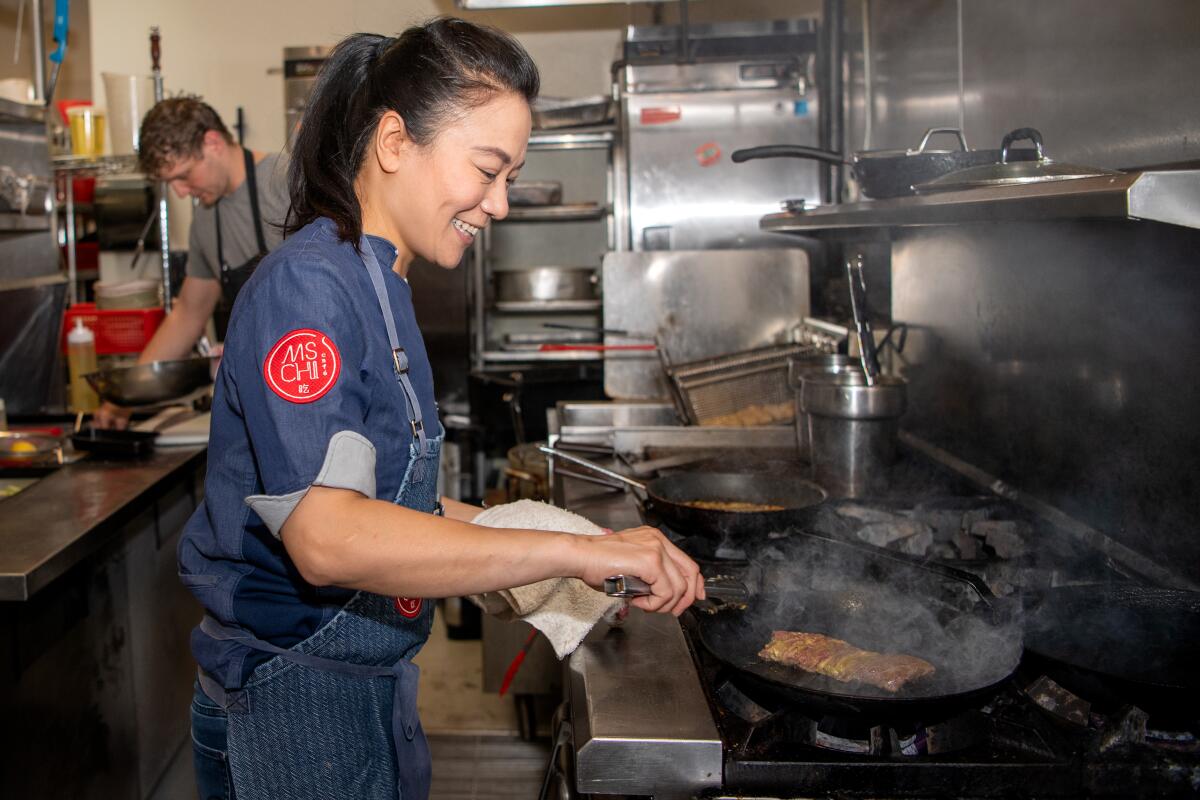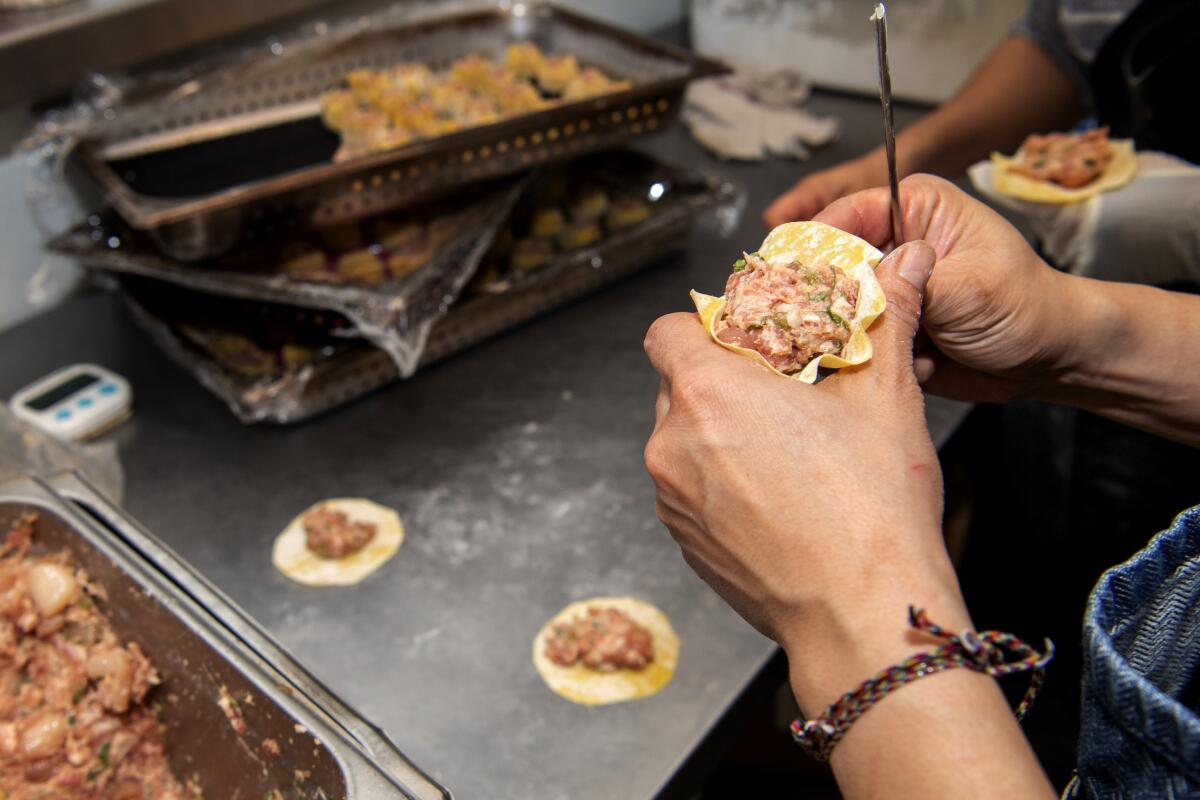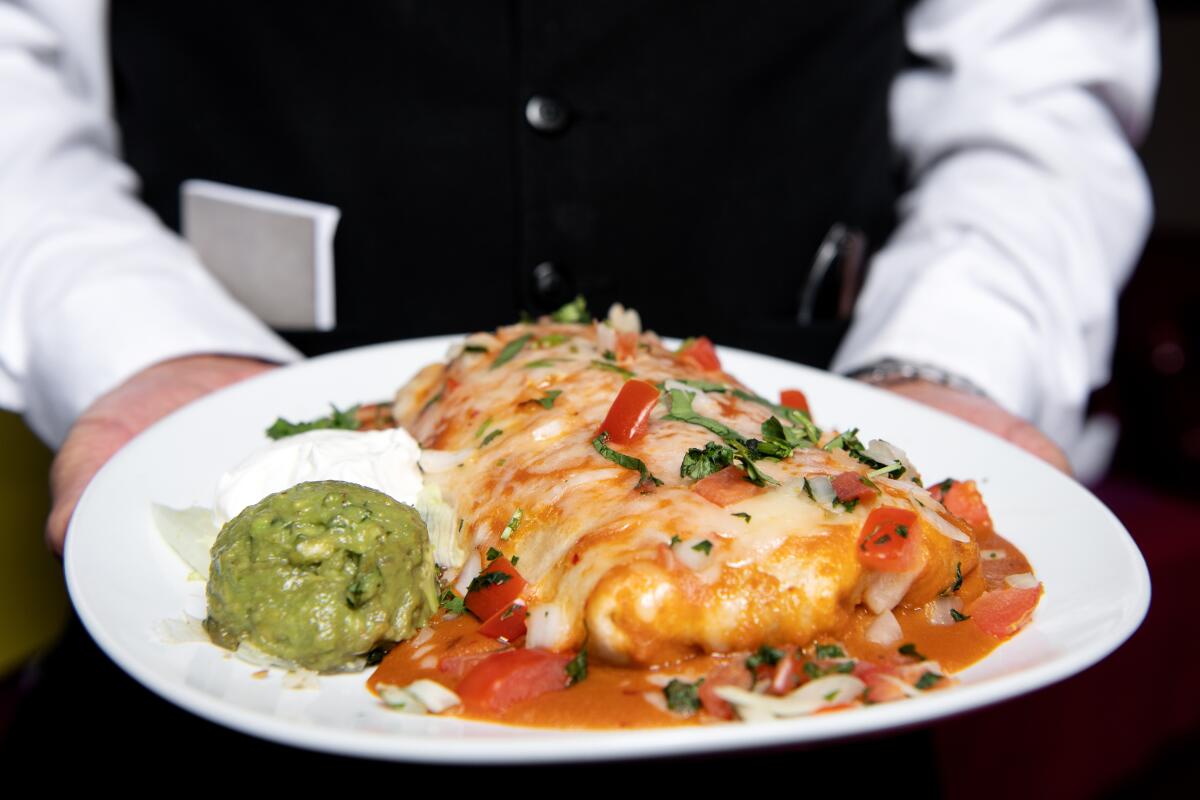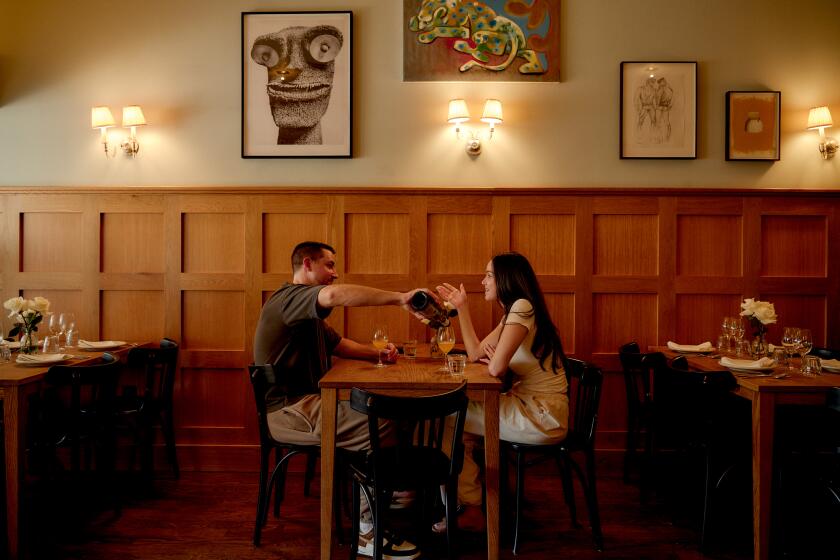Why it’s harder than ever to run a restaurant in Los Angeles

Chef Shirley Chung hasn’t given herself a paycheck in more than a year. After she and her husband, Jimmy, spent more than $200,000 out of pocket to open Ms. Chi in Culver City in September they realized they needed to funnel any money the restaurant was pulling in to keep up with payroll, equipment and rent.
It’s not that Ms. Chi isn’t busy: The fast-casual place is usually packed with people digging into bowls of hand-pulled noodles and handmade dumplings. But the cost of running a restaurant in the Los Angeles area has become so high that Shirley Chung says she has to rely on other income streams to get by.
“Right now, we live on my side hustles,” the “Top Chef” alum said, including catering gigs, speaking appearances and a two-week stint cooking at the Coachella Valley Music and Arts Festival in Indio in April. “We live minimally, because this is our dream. I want longevity and to make sure it’s not just around for two to three years.”
The financial challenges that Chung faces are common in the restaurant world, which has long contended with notoriously slim margins, fickle diners and fluctuating ingredient costs. It’s a cutthroat business that fells even the most promising and acclaimed restaurants — this year alone, Fiona on Fairfax, Native in Santa Monica, Spring and B.S. Taqueria downtown and Simone in the Arts District have all closed. But now, with the increase in minimum wage for many areas in and around Los Angeles and rising rents in many desirable neighborhoods, restaurant owners say an already tough business is starting to feel prohibitively expensive.

“When you look at the regulatory red tape, the accelerating minimum wage laws and the increase in taxes, it’s really harder to do business here now than it was even five years ago,” said Kevin Burke, founder of Trinity Capital, a Los Angeles investment banking firm that specializes in restaurants. “Everything is becoming more expensive, which puts a lot more risk on the owner.”
Local chefs say they worry that big chains and deeply funded independent restaurants will soon be the only places that can feasibly go into and stay in business here, pushing small, market- and chef-driven places out.
Part of the problem: The two biggest expenses for restaurants owners — rent and payroll — have risen steeply in recent years.
On July 1, the minimum wage in Los Angeles rose to $13.25 for businesses with 25 or fewer employees, up from $12; three years ago, it was $10. Next year, it will increase to $14.25. California minimum wage is set to increase to $15 by 2023, but some municipalities, including Los Angeles and Pasadena, will reach that wage by 2021.
“All of my kitchen staff are already making more than $15 an hour,” Chung said. “But my check average is a lot lower than most restaurants; it’s about $37 for dinner and $16 for lunch.”

Christy Vega, who owns the Mexican restaurant Casa Vega in the Sherman Oaks neighborhood of L.A., along with chef Ludo Lefebvre of Petit Trois, are part of a small, independent restaurant group in the San Fernando Valley that has lobbied L.A. City Council members, Gov. Gavin Newsom and the California Restaurant Assn. to implement a tip credit. In that model, restaurants would be responsible for making up the difference if a tipped employee didn’t earn $15 an hour after his or her hourly wages and tips were combined.
“It’s absolutely not because I don’t want to pay my employees fairly or feel like they are not deserving of a certain wage,” said Brooke Williamson, chef-owner of multiple L.A.-area restaurants, including Playa Provisions, the Tripel and Hudson House. The “Top Chef” alum is another proponent of a tip credit system.
“The dishwasher is one of our most valued employees and someone we cannot pay what they deserve because we have other employees making $500 a day,” she said, “and not to mention the taxes that we have to pay on their tips.”
Some chefs worry that the CRA is focusing more on lobbying for chain restaurants, leaving the smaller players to fend for themselves.
“They are much more inclined to listen to Chipotle and big chains that pay massive amounts of money to them — places that would be happy to see all the fine dining sit-down places go away,” Vega said.

Sharokina Shams, vice president of public affairs for the CRA, said that 80% of its members are independently owned restaurants and that all members receive the same benefits. Instead of a tip credit, Shams said the association prefers a model where the guaranteed hourly pay for a tipped employee would not be capped at minimum wage and could instead be set at $18 or $20 an hour.
At the same time, restaurant rents are also on the rise. In Santa Monica, commercial real estate is leasing for $7.50 per square foot, up from $4.50 in 2010, according to real estate firm CBRE. In Koreatown, during that same period, prices doubled to $6 per square foot; in downtown Los Angeles, they rose to $2.95 from $2.19 per square foot.
“It’s different, depending on the area, but we’re definitely seeing a lot more turnover these days,” said Johnny Choi, a senior associate at CBRE. “We’re noticing that it’s getting very difficult for a lot of these smaller, independent restaurants to stay afloat if their fixed costs are too high.“
Rising rent was a major factor in Evan Kleiman’s decision to close Angeli Caffé in 2012 after 27 years. She’s still paying off debt from the Melrose Avenue restaurant.
“The margins are really tight, and I think real estate is insane,” she said. “If somebody wants to open a restaurant, they should pay me $5,000 and I’ll get them in a room and talk to them until they decide it’s not for them.”
Chef Nyesha Arrington closed her celebrated restaurant Native in March after just a year and a half. She was paying more than $20,000 a month, along with an additional $6,000 per month for extra storage space in the building.
“You have to fight for every dollar, every guest and everything you’re doing in this business,” Arrington said.
Another challenge restaurants face: the rising cost of ingredients. The price of fresh vegetables was 28% higher in April than the same month a year ago, according to the National Restaurant Assn.

“A case of avocados is now $100, and it used to be about $60,” said Vega, whose family uses income from residential properties, filming at the restaurant and catering to help supplement the money they make from Casa Vega. “Limes were $20 a case, and now they are $60. Should we stop giving guacamole for free with all the dishes? No, we ride it out for customer consistency.”
Chefs are thinking of ways to adjust their businesses to manage rising costs.
“You’ll see more of a model where there’s a blurred line between chefs and servers,” Kleiman said. That’s already happening in San Francisco, where some restaurants have started using a grab-your-own-plates-and-silverware model to save money.
Chad Colby, chef-owner of the new Italian restaurant Antico in the Larchmont area of L.A., decided to employ just one crew member and have limited hours: dinners only, weeknights only. He said adding lunch would likely not be worth it because his labor costs would soar.
Raising prices might seem the easy solution. But that can be a risky move.
“You raise your prices [too much] and people are going to go to the restaurant next door,” Arrington said.
Or they’ll simply stay home, a choice many people are already making.

“It’s increasingly more affordable to eat at home and increasingly more expensive to eat outside of the home,” said David Portalatin, vice president and food industry adviser for the market research firm NPD Group. “Restaurants are bearing the brunt.”
Colby, who includes a 20% service charge on all checks, believes the solution is to have a fixed charge on the bill that can be used to help cover healthcare and wages for kitchen staff, which cannot legally be included in a tip pool with waiters.
“If you raise prices, it doesn’t necessarily distribute the way that it should,” Colby said. “People may get upset by the fixed charge because they don’t understand the intention behind it is to distribute that money evenly amongst the staff.”
Kleiman believes that all-in pricing, a model where everything is included in the cost of your meal and tipping isn’t allowed, is the solution more restaurants will turn to.
Casa Vega, which opened in 1956, is trying to keep up. While there’s a nostalgia factor that attracts a solid base of regulars, introducing a service charge or drastically raising prices to keep up with rising costs is not a viable option, Vega said.
“Do we sell our properties to float the restaurant?” she wondered. “Do we cut healthcare, which is against our moral values? Do we cut busboys and reduce the labor cost?”
These are questions Vega asks herself daily.
“We are a very busy restaurant and we are running on cents,” she said. “I hope costs stabilize a bit and stop increasing. I hope that as we are approaching$15 an hour, we can grow into it. And that we can keep our doors open.”
More to Read
Eat your way across L.A.
Get our weekly Tasting Notes newsletter for reviews, news and more.
You may occasionally receive promotional content from the Los Angeles Times.










